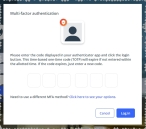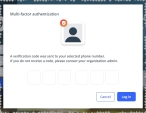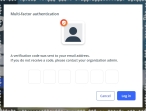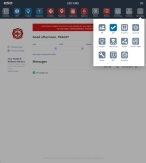Set minimum and maximum par levels
A minimum (min) par level is the lowest number or amount of an item that a location (station, hospital, or vehicle) can have on hand, before they must obtain more of the item through transfers between locations or ordering from a supply vendor. Establishing a min par level for every item in the agency's catalog helps the location maintain sufficient stock for its needs, and prevents jeopardizing patient care from a lack of medications or medical supplies.
A maximum (max) par level is the highest (ideal) number or amount of an item that a location should have on hand at any time. If a location has more of an item than their max par level defines, the location should transfer the overage of that item to other locations that may need it. Establishing a max par level for every item in the agency's catalog helps minimize waste from items with expiration dates, and redistributes medications and medical supplies to locations that need them the most.
The Inventory module automatically tracks both these levels for you, and alerts you when an item falls below the minimum par level. This tracking is especially important for vehicles, which must have sufficient stock when responding to emergencies in the field, and which should not be operating if they are running below minimum par levels with their inventory.
-
 If you have not done so already) Access the Inventory module in the ESO Suite.
If you have not done so already) Access the Inventory module in the ESO Suite.
-
Do one of the following.
-
(If you are already working in the ESO Suite) Click the Home icon in the upper left corner of the screen.
-
 (If you have not yet logged in) Log in to the ESO Suite.
(If you have not yet logged in) Log in to the ESO Suite.
-
In a web browser, go to https://www.esosuite.net/EsoSuite.
The ESO Suite login screen appears.
-
Enter your user name, password, and agency name, then click Let's Go.
If MFA is enabled, the Multi-factor authentication dialog box appears, displaying one or more methods you can use to verify your login credentials. The number of methods that appear in the dialog box depends on what MFA methods your ESO Suite administrators enabled in the Admin module.
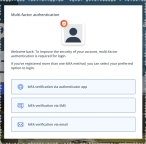
Click graphics
to open them.Information on enabling MFA and specific MFA methods is available in the Admin module online help, in Configure multiple-factor authentication.
Note: If your ESO Suite administrators have disabled MFA ("opted-out"), this dialog does not appear.
-
(If the Multi-factor authentication dialog box appears) Depending on which buttons appear in the dialog box, verify your login in one of the following ways.
 With an authenticator application.
With an authenticator application.
-
Click MFA verification via authenticator app.
The dialog box updates with boxes for entering the numbers of the authentication code, and the ESO Suite sends an authentication code to the authenticator application installed on your device.
-
Open your authenticator application and note the authentication code currently displayed.
-
Enter the authentication code displayed in the authenticator application.
-
Click Log In.
 With a text message (SMS).
With a text message (SMS).
-
Click MFA verification via SMS.
The dialog box updates with boxes for entering the numbers of the authentication code, and the ESO Suite sends an authentication code to the phone number recorded in your PM records and identified with MFA codes.
-
Enter the authentication code sent to your MFA-registered phone number.
-
Click Log In.
 With an email message.
With an email message.
-
Click MFA verification via email.
The dialog box updates with boxes for entering the numbers of the authentication code, and the ESO Suite sends an authentication code to your agency or department email address, recorded in your PM records.
-
Enter the authentication code sent to your agency or department email address.
-
Click Log In.
-
-
The ESO Suite landing screen appears.
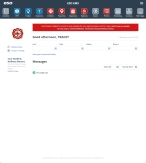
Click graphics
to open them.Note: If MFA is enabled, you can access and manage your MFA options through the PM module, on the Settings > Account page, as described in Manage a user account. If your agency or department has enabled MFA but has not purchased the full-featured version of the PM module, you can access your own MFA settings by clicking Change my Multi-Factor Authentication settings on the landing screen, then using the Settings > Account page that appears. If your agency has not enabled MFA, the Change my Multi-Factor Authentication settings link does not appear on the landing screen.
-
-
-
On the top side of the home screen, click Inventory.

The Inventory module opens, displaying the Action now page and the Welcome to Inventory! message.
Click graphics
to open them. -
In Step 3: Set your agency par levels, per available item for each of your agency locations, click Set par levels.
The Inventory module takes you to the Settings pages, and the Overview page appears on the right. From this page, you can set all the par levels at every location, for every item in the item catalog at once, by populating and uploading a spreadsheet of par levels.
Note: While you can also set par levels through the Stations, Hospitals, and Vehicles pages you worked with earlier in the onboarding process, entering the initial par levels this way may become very time-consuming. This method is better suited for adjusting individual item par levels after the initial levels are established through importing the populated spreadsheet.
-
 Download the blank par levels spreadsheet.
Download the blank par levels spreadsheet.
-
In the Setting par levels across your agency section, click Download available items list to set par levels.
The
Par_Levels.xlsxspreadsheet downloads to your default download location, or prompts you for a location, depending on your browser settings. -
Navigate to the download location and open the spreadsheet.
In column A, the spreadsheet lists every item in your agency's item catalog, and in row 12, the spreadsheet lists each of the locations your agency supplies. In row 13, under each location name, the Min and Max columns let you specify the min and max par numbers or amounts for each item in that location. The listing of items in your agency's item begins in row 14.
-
-
 Populate the spreadsheet with min and max data.
Populate the spreadsheet with min and max data.
-
In the yellow Protected View banner across the top of the spreadsheet, click Enable Editing.
-
In the row for the first item in your agency's item catalog, under the name of the first location in the spreadsheet, in the Min and Max columns, click the cells and enter the min and max par numbers for the item at that location.
Example: In the row for
Abdominal Pad 12x16, in the Min and Max columns underCentral (Main) Station), you may type3for the min par level for the pads, and12for the max par level at the Central Station. -
In the same row, under the name of the second location in the spreadsheet, in the Min and Max columns, click the cells and enter the min and max par numbers for the item at that location.
Example: Under the
East Station, you may type2for the min par level for the pads, and6for the max par level at the East Station. -
Continue moving across the same row and specifying the min and max par numbers for every location in the spreadsheet.
-
Repeat steps b–d for every item row in the spreadsheet.
-
Save your changes in the spreadsheet.
-
-
 Upload the populated par levels spreadsheet.
Upload the populated par levels spreadsheet.
-
In the Inventory module, in the Setting par levels across your agency section, under Ready to upload your par levels?, click Choose.
-
Use the file browser that appears to navigate to and open the spreadsheet you populated with min and max par values.
The name of your file appears under Ready to upload your par levels?, and the Upload and Cancel buttons activate.
-
Click Upload.
A progress bar appears across the bottom of the section, then a success message appears in the upper right corner of the page when the Inventory module finishes uploading the spreadsheet to the ESO Suite database.
At the top of the Overview page, the Setting par levels across your agency section has updated, and now contains instructions for uploading the numbers and amounts of items your agency currently has on hand, for every item in its item catalog.
-
-
 Proceed to the next onboarding task.
Proceed to the next onboarding task.
-
Return to the Action now page in one of these ways.
If you are here Do this On the Overview page
-
At the top of the Overview page, below the confirmation message indicating that the task is marked as completed, click View all onboarding steps.
On any page
-
In the upper left corner of the screen, click the Action now icon.

The Action now page appears. In the Welcome to Inventory! section, the Step 3: Set your agency par levels, per available item for each of your agency locations now has a check mark in front of it to indicate that you completed all the sub-tasks within this step, the word Complete now appears below Step 3, and the drop-down for the section is closed. The progress bar at the top of the Welcome to Inventory! section, reflects your current progress through the onboarding tasks, and Step 4: Upload your current inventory has automatically opened to guide you to the next set of tasks in the onboarding process.
Tip: If you want to review the completed Step 1, Step 2, or Step 3 onboarding tasks, on the right side of the section, click Open. The task expands, and you can see all the text and buttons related to completing this task.
-
-
Continue to the next step in agency's onboarding tasks, as described in Upload your agency's current inventory information.
-

